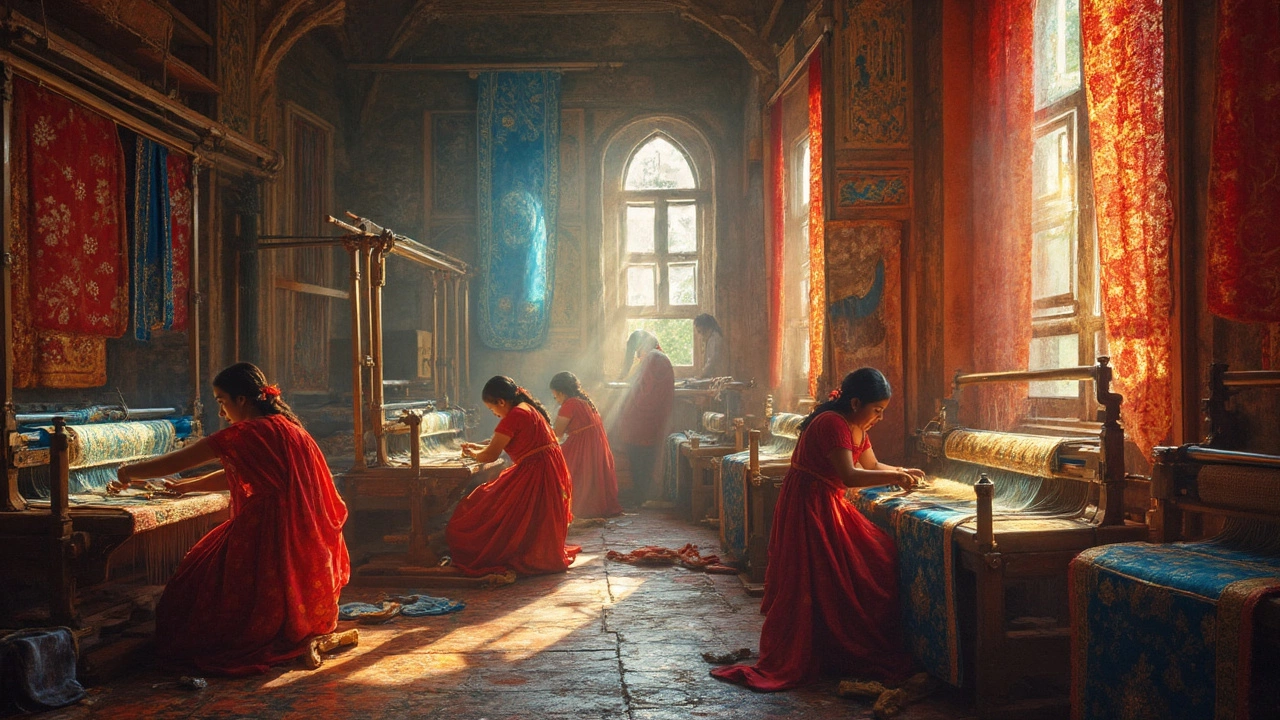- Richest Pharmacist in the World 2025 - Who Holds the Fortune? Oct 10, 2025
- How Manufacturing Helps American Society in 2025: Jobs, Innovation, Security, Community Sep 11, 2025
- Best Plastic Manufacturing Companies in 2025 Nov 8, 2025
- India's Biggest Machine: Discover the Largest Heavy Machinery Ever Built in India Jul 16, 2025
- Which Country Has Produced the Most Car Brands? Dec 1, 2025
Luxury Textiles: Trends, Tech, and Sustainable Growth
If you’re looking for what makes a fabric feel premium, you’re in the right spot. Luxury textiles aren’t just about shiny threads; they combine rare materials, cutting‑edge processes, and a strong focus on sustainability. In the next few minutes you’ll learn which fabrics are hot right now, the tech that’s changing how they’re made, and why India is becoming a key player.
What Defines a Luxury Textile?
First things first: a luxury textile has three hallmarks. One, the raw material – think cashmere, silk, alpaca, or high‑quality organic cotton. Two, the finish – special weaves, hand‑finished edges, or innovative surface treatments that add softness and durability. Three, the story – a traceable supply chain, eco‑friendly production, and limited editions that justify a higher price. When all three line up, you get a fabric that commands attention and a premium price tag.
Key Trends Shaping the Market in 2025
Here are the trends you’ll see on store shelves and in designer studios this year:
- Eco‑Luxury: Brands are swapping chemical dyes for natural pigments and using recycled fibers without sacrificing feel. Consumers now expect a green story with their silk scarf.
- Tech‑Enabled Fabrics: Smart yarns with temperature control or moisture‑wicking properties are moving from sportswear into high‑end fashion. The tech adds value and justifies a higher cost.
- Local Sourcing: Indian producers are partnering directly with shepherds and cotton growers, cutting middlemen and offering a true "Made in India" luxury label.
- Limited Runs: Small‑batch production creates exclusivity. Digital design tools let manufacturers produce micro‑collections with the same precision as large factories.
These trends aren’t isolated – they overlap. For example, a limited‑run cashmere coat might be dyed with plant‑based colors and feature a built‑in temperature‑regulating layer.
At Rise Corp India, we’ve built a manufacturing hub that supports all these trends. Our facilities blend traditional hand‑loom expertise with modern automation, allowing us to keep costs low while delivering the high‑end feel brands demand.
Why does India matter? The country has a huge base of skilled artisans, a growing number of eco‑certified farms, and government incentives for high‑value textile exports. This means manufacturers can source premium raw material locally, apply advanced finishing techniques, and ship finished goods worldwide at competitive rates.
Thinking about getting into luxury textiles? Here’s a quick checklist you can follow:
- Identify a niche material – cashmere, organic silk, or a tech‑enabled yarn.
- Find a trusted supplier with traceable farming practices.
- Choose a partner that can blend hand finishing with modern quality control.
- Plan a limited production run to test market response.
- Build a story around sustainability and craftsmanship.
Following these steps will help you launch a product that stands out and meets the expectations of today’s discerning buyers.
Bottom line: luxury textiles are evolving fast. The mix of premium raw materials, sustainable methods, and smart technology creates new opportunities, especially for manufacturers in India. Whether you’re a brand looking for a reliable partner or a designer hunting the next big fabric, the landscape is ripe for innovation.
Expensive Fabrics in India: What Makes Them Costly?
- Aarav Sekhar
- Jun 8, 2025
Which fabrics top the price charts in India, and why do they cost so much? This article breaks down the most expensive textiles, highlighting what sets them apart. You'll learn what drives the price—whether it's rare materials, skilled craftsmanship, or tradition. Discover which regions in India are hotspots for luxury fabric making. Get practical tips if you're thinking of buying or investing in high-end cloth.
